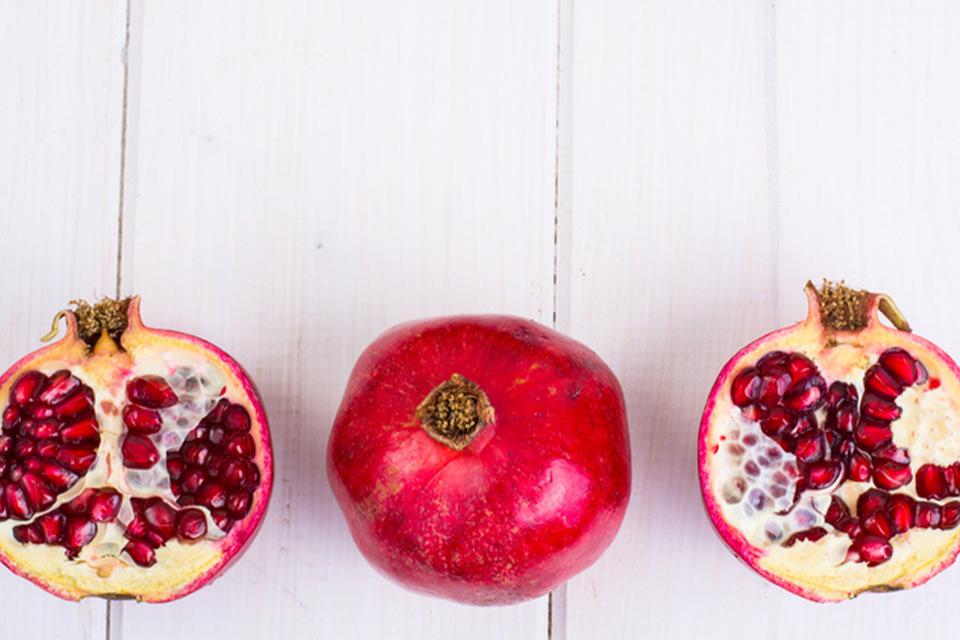LONGEVITY DIET

A new diet based on research into the body's ageing process suggests you can increase your life expectancy by up to 20 years by changing your diet. MUST READ This could be the most important treatise of your life.

Brett Ryder
I HAVE seen my future and it is full of beans, both literally and metaphorically. As well as upping my bean count, there will be a lot of vegetables, no meat, long periods of hunger and hardly any alcohol. But in return for this dietary discipline, my future will also be significantly longer and sprightlier. I am 52 and, on my current diet, can expect to live another 29 years. But if I change now, I could gain an extra decade and live in good health into my 90s.
This “longevity diet” isn’t just the latest fad, it is the product of more than a human lifespan of scientific research. And it isn’t merely designed to prevent illness, but to actually slow down the ageing process – that’s the claim, anyway.
Of course, it is a no-brainer to say that our diets can alter our lifespans. Worldwide, millions of people still die prematurely every year from lack of calories and nutrients. Meanwhile, an estimated 11 million die each year from too many calories and the wrong sort of nutrients. Scoffing more than we need inevitably leads to obesity and its pall-bearers, cardiovascular disease, diabetes and cancer.

Typical Western diets are also high in sugars, refined starches and saturated fats and low in wholefoods, which add insult to injury by disrupting metabolism. That includes the excessive release of insulin, the hormone that keeps blood sugar levels under control and has a direct impact on ageing. Suffice to say that Western diets don’t push the longevity lever in the right direction. But is it really possible to eat oneself into a later grave? …Brett Ryder
Ok I dont have a clue what the new diet is? All of the doctors, dietians, expert foodies including kato diet told us to eat low carb high fat diets including red meat? This diet method is dead wrong is ok for nutrients however by eating this diet you will actually die earlier and have many diseases.
THE NEW SCIENTIFIC EVIDENCE WILL RECOMMEND CARBOHYDRATE DIET WITH LEAFTY GREENS, SALADS, BERRIES, AND FISH AND ELIMINATE ALL RED MEAT, PROCESSED FOODS, SUGARY DRINKS AND MOST CEREALS.


The 10 Best Foods for Longevity
What we eat has the potential to help us or harm us. Our addiction to processed food offers insufficient nourishment and is the cause of illnesses like obesity, cardiovascular disease and type 2 diabetes. It doesn’t have to be this way — we should eat foods that leave us energized, reduce our risk of illness and allow us to maintain a healthy weight. To live longer and be healthier, we have to fuel our bodies with nutrient-dense foods. Natural plant foods can restore our health and vitality.

- Cruciferous Vegetables
- These are vegetable powerhouses with the unique ability to modify human hormones, activate the body’s natural detoxification system and inhibit the growth of cancerous cells. Cruciferous vegetables should be chewed thoroughly or eaten shredded, chopped, juiced or blended in order to release their potent anti-cancer properties. The cruciferous phytochemical sulforaphane has been found to protect blood vessel walls from inflammatory signaling that can lead to heart disease. Cruciferous vegetables are the most nutrient-dense of all the foods. Eat a variety in both raw and cooked form daily — try some broccoli, cauliflower, Brussels sprouts, kale or cabbage.
2. Salad Greens
- Raw, leafy green vegetables – some are cruciferous –contain less than 100 calories per pound, making them an ideal food for weight control. In scientific studies, women who ate a large salad at the beginning of a meal ate fewer calories from the rest of the meal, and larger salads reduced calories more than smaller ones. In addition to keeping weight down, greater intake of salads, leafy greens or raw vegetables is associated with reduced risk of heart attack, stroke, diabetes and several cancers. Leafy greens are also rich in the essential B-vitamin folate plus lutein and zeaxanthin, carotenoids that protect the eyes from light damage. Try kale, collard greens, mustard greens, spinach or lettuce. To maximize the health benefits of leafy greens, you must maximize your absorption of their fat-soluble phytochemicals, carotenoids in particular, and that requires fats – which is why your salad (or dressing) should always contain nuts and/or seeds.
3. Nuts
- A high-nutrient source of healthful fats, plant protein, fiber, antioxidants, phytosterols and minerals, nuts are a low-glycemic food that also help reduce the glycemic load of an entire meal, making them an important component for an anti-diabetes diet. Despite their caloric density, nut consumption is associated with lower body weight, potentially due to appetite suppression from heart-healthy components. Eating nuts regularly also reduces cholesterol and is linked to a 35 percent reduction in the risk of heart disease. Top your next salad with chopped walnuts or sliced almonds or blend some raw cashews into a creamy salad dressing.
4. Seeds

- The nutritional profile of seeds is very similar to nuts in that they provide healthy fats, minerals and antioxidants, but seeds have more protein and are abundant in trace minerals. Flax, chia and hemp seeds are rich in omega-3 fats. Flax, chia and sesame seeds are also rich lignans, breast cancer-fighting phytoestrogens. Sesame seeds are rich in calcium and vitamin E and pumpkin seeds are especially rich in zinc. For maximum nutritional benefits, nuts and seeds should be eaten raw or only lightly toasted. Try adding flax or chia seeds to your morning smoothie or oatmeal.
5. Berries
- These antioxidant-rich fruits are very heart-healthy. Studies in which participants ate blueberries or strawberries daily for several weeks reported improvements in blood pressure, signs of oxidative stress, total and LDL cholesterol. Berries also have anti-cancer properties and are an excellent food for the brain. There is evidence that berry consumption could help prevent cognitive decline with aging. Stick with the tried and traditional strawberry or blueberry, or try something new like goji berries.
6. Pomegranate
- The pomegranate is a unique fruit, containing tiny, crisp, juicy arils with a tasty mix of sweet and tart flavors. The signature phytochemical of pomegranate, punicalagin, is the most abundant and is responsible for more than half the antioxidant activity of pomegranate juice. Pomegranate phytochemicals have a variety of anti-cancer, cardio-protective and brain-healthy actions. Most notably, a study of patients with severe carotid artery blockages who drank one ounce of pomegranate juice daily for one year found a 30 percent reduction in atherosclerotic plaque; in the control group, atherosclerotic plaque increased by nine percent. In another study of older adults, those who drank pomegranate juice daily for 28 days performed better on a memory task compared to those who drank a placebo beverage. Tip: To remove the edible arils from the fruit, score it around a half inch deep on the diameter, twist to split it in two and pound the back with the back of a large spoon.
7. Beans
- Daily consumption of beans and other legumes helps stabilize blood sugar, reduce your appetite and protect against colon cancer. The most nutrient-dense starch source, beans act as an anti-diabetes and weight-loss food because they are digested slowly, which blunts the rise in blood glucose after a meal and helps prevent food cravings by promoting satiety. They also contain lots of soluble fiber which helps lower cholesterol, and resistant starch which is converted by intestinal bacteria into short-chain fatty acids that help prevent colon cancer. Eating beans, peas or lentils twice a week has been found to decrease colon cancer risk by 50 percent. Legume consumption also provides significant protection against other cancers too. Red beans, black beans, chickpeas, lentils, split peas – they are all good, so sample them all and decide on your own favorites.
8. Mushrooms
- Consuming mushrooms regularly is associated with a decreased risk of breast cancer. Because they contain aromatase inhibitors, compounds that inhibit the production of estrogen, white and portobello mushrooms are especially protective against breast cancer. Mushrooms have quite an array of beneficial properties. Studies on different types of mushrooms have found anti-inflammatory effects, enhanced immune cell activity, prevention of DNA damage, slowed cancer cell growth and angiogenesis inhibition. Mushrooms should always be cooked; raw mushrooms contain a potentially carcinogenic substance called agaritine that is significantly reduced by cooking. Regularly include common white mushrooms in your diet and try some of the more exotic varieties like shiitake, oyster, maitake or reishi.
9. Onions and Garlic
- The allium family of vegetables, of which onions are a member, benefit the cardiovascular and immune systems and have anti-diabetic and anti-cancer effects. Increased consumption of allium vegetables is associated with a lower risk of gastric and prostate cancers. These vegetables are known for their organosulfur compounds which help prevent the development of cancers by detoxifying carcinogens, halting cancer cell growth and blocking angiogenesis. These compounds are released when they are chopped, crushed or chewed. Onions also contain high concentrations of health-promoting flavonoid antioxidants, which have anti-inflammatory effects that may contribute to cancer prevention. In addition to garlic and yellow onions, try leeks, chives, shallots and scallions.
10. Tomatoes
- An abundance of health-promoting nutrients can be found in tomatoes – lycopene, vitamins C and E, beta-carotene and flavanol antioxidants, to name but a few. Lycopene in particular protects against prostate cancer, UV skin damage and cardiovascular disease. About 85 percent of the lycopene in American diets is derived from tomatoes. Lycopene is more absorbable when tomatoes are cooked – one cup of tomato sauce has 10 times the lycopene as one cup of raw, chopped tomatoes. Also keep in mind that carotenoids, like lycopene, are best absorbed when accompanied by healthy fats, so enjoy your tomatoes in a salad with nuts or a nut-based dressing for extra nutritional punch. Tip: buy diced and crushed tomatoes in glass jars, not cans, to avoid the endocrine disruptor BPA in can liners.

THINGS YOU MAY NOT KNOW: How many good plants to grow in your home garden to be self suficient. Potatoes, sweet potatoes, corn, squash, melons, cabbage, lettuce, tomatoes, mushrooms, berries, cucumbers, pumpkins, zucchini, beans, carrots, peppers, onions, peas and eggplant.
THINGS YOU MAY WANT TO SAVE: Seed bank consisting of natural disease free seeds and anti commercial GMO'S.
ZENTRAVELER SAYS: With good food choices you can be disease free and add years to your longevity calendar.
From here to Infinity is a relatively short ride! The next leg takes eons and eons as you fly through the Barycentric Dynamical Time Zone! …and on and on and on. Follow the Zentraveler Newsletter often for Travel, Health and Zen-like stories and such. Where else can you get a THREE IN ONE NEWSLETTER FOR THE PRICE OF FREE.

ZENTRAVELER IS A PERSONAL NEWSLETTER, DESIGNED TO GIVE TRAVEL, HEALTH, WRITING AND HUMOR INCLUDING HELPFUL HINTS WITH A ZEN LIKE QUALITY.
